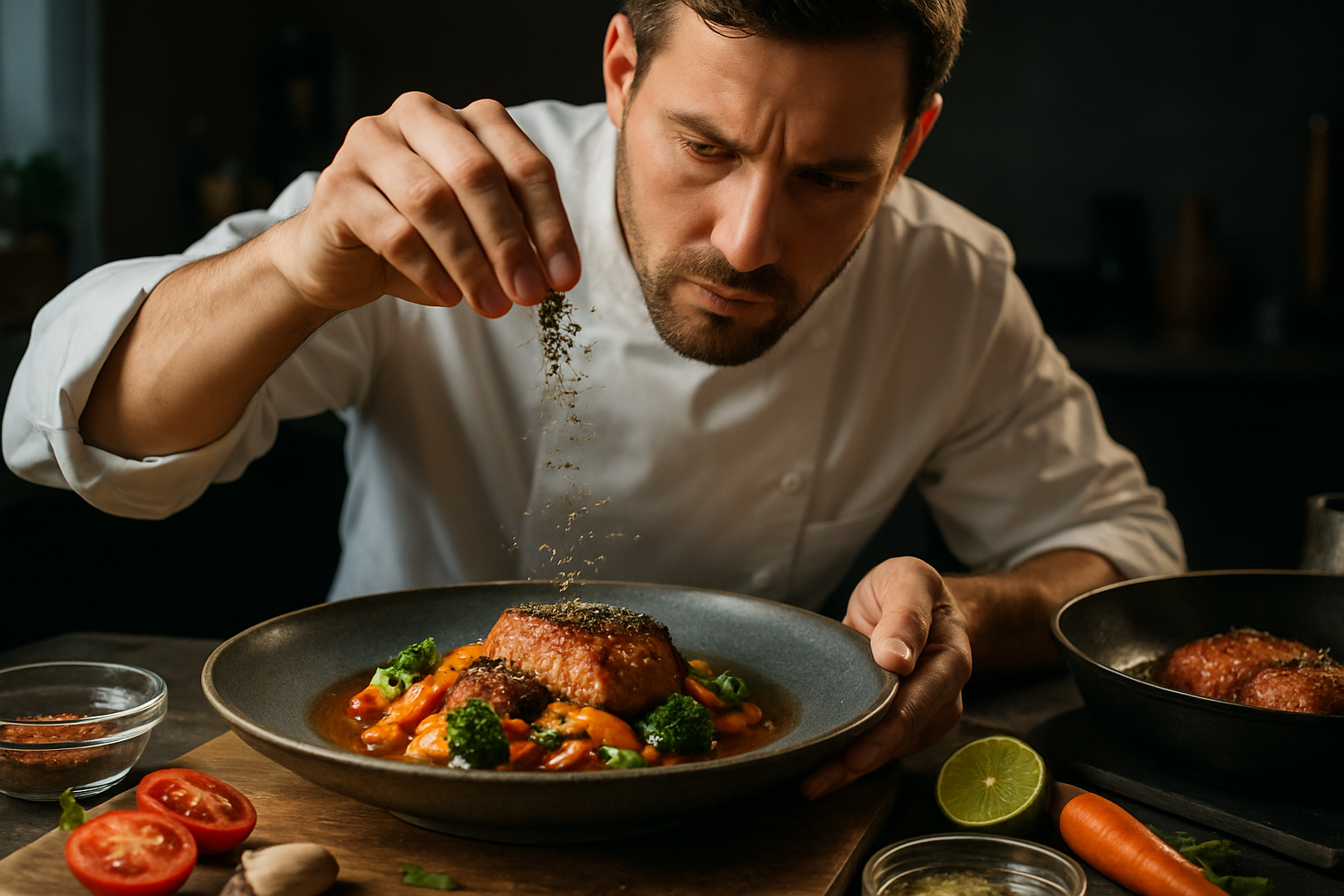Savory Sensations: The Art of Salt-Curing Meats
Elevate your culinary prowess with the ancient technique of salt-curing meats. This time-honored method not only preserves but also transforms flavors, creating delectable delicacies that tantalize the taste buds. From prosciutto to gravlax, discover the secrets behind this craft and learn how to bring these gourmet treats to your own kitchen.

Selecting the Perfect Cut
Choosing the right cut of meat is crucial for successful salt-curing. Opt for high-quality, fresh meats from reputable sources. Pork is a popular choice, with cuts like pork belly ideal for pancetta and leg muscles perfect for prosciutto. Beef can be transformed into bresaola, while salmon becomes gravlax. The fat content plays a significant role in the final product’s flavor and texture. Fattier cuts tend to develop a more complex taste profile and remain tender throughout the curing process. Leaner meats, while still delicious, may become drier and more concentrated in flavor. Consider the meat’s thickness as well, as this affects curing time and salt penetration. Experiment with different cuts to discover your preferred flavor and texture profiles, and don’t be afraid to try unconventional options like duck breast or venison for unique cured meats.
The Science of Salting
Understanding the science behind salting is key to mastering the art of curing. Salt acts as both a preservative and a flavor enhancer. When applied to meat, it creates an osmotic pressure that draws out moisture, inhibiting bacterial growth. This process also concentrates flavors and alters proteins, resulting in the characteristic texture of cured meats. The type of salt used can impact the final product. Coarse sea salt or kosher salt are preferred for their purity and lack of additives. Some curing processes incorporate nitrates or nitrites, which help prevent botulism and maintain color. However, many artisanal producers opt for nitrate-free methods. The salt-to-meat ratio is crucial and varies depending on the meat’s thickness and desired outcome. Too little salt can lead to spoilage, while too much can render the meat inedible. Mastering this balance is the hallmark of a skilled curer.
Aromatics and Flavor Infusions
While salt is the star of the curing process, aromatics and spices can elevate your cured meats to new heights of flavor. Traditional cures often incorporate herbs like thyme, rosemary, or bay leaves, which infuse the meat with their essential oils during the curing process. Spices such as black pepper, juniper berries, or fennel seeds add depth and complexity. Some cures even include alcohol, like wine or cognac, for an extra layer of sophistication. When adding aromatics, it’s important to strike a balance that complements rather than overpowers the meat’s natural flavors. Experiment with different combinations to create your signature cure. For a sweet-savory profile, try adding brown sugar or maple syrup to your cure mix. Citrus zest can brighten the flavors, while chili flakes add a subtle heat. The key is to let your creativity shine while respecting the meat’s inherent qualities.
Curing Environments and Techniques
Creating the ideal curing environment is crucial for producing safe and delicious cured meats. Temperature and humidity play vital roles in the process. Most curing takes place between 50-60°F (10-15°C) with humidity levels around 60-75%. These conditions allow for slow, controlled curing that develops flavor without risking spoilage. Many home curers convert refrigerators or wine coolers into curing chambers, using humidifiers and temperature controllers to maintain optimal conditions. Various curing techniques exist, from dry-curing, where meat is packed in salt, to wet-curing, which involves submerging meat in a brine solution. Some methods, like equilibrium curing, use precise salt measurements to achieve consistent results. For those new to curing, starting with smaller cuts and quicker cures, like gravlax or duck prosciutto, can build confidence before tackling larger projects. Always prioritize food safety by following proper sanitation practices and monitoring your cures closely.
Flavor Fusion: Tips for Salt-Curing Success
-
Choose high-quality, fresh meats from trusted sources
-
Use pure, additive-free salts like sea salt or kosher salt
-
Experiment with different herb and spice combinations
-
Maintain consistent temperature and humidity during curing
-
Start with smaller cuts for quicker results and less risk
-
Keep curing areas clean and sanitized to prevent contamination
-
Monitor weight loss to track the curing process
-
Allow cured meats to rest before slicing for optimal flavor
A Culinary Adventure Awaits
Salt-curing meats is more than a preservation technique; it’s a journey into the heart of culinary tradition and innovation. By mastering this ancient art, you open the door to a world of flavors and textures that can elevate your cooking to new heights. Whether you’re crafting your own prosciutto or experimenting with unique cures, the process of transforming raw meat into a savory delicacy is both rewarding and delicious. As you embark on your curing adventures, remember that patience is key. The best flavors develop over time, rewarding those who wait with unparalleled taste experiences. So, roll up your sleeves, embrace the science and art of curing, and prepare to impress your palate and your guests with your homemade cured creations.





